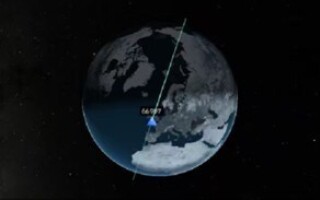Army-led team demos stored isotopic energy in quest for alternative battery types
NewsFebruary 08, 2018

ADELPHI, Md. The U.S. Army Research Laboratory (ARL) has reported that a multinational research team led by Army scientists successfully induced a controlled release of stored isotopic energy using a physical effect involving atomic electrons. The technique was posited over 40 years ago but has never before been demonstrated experimentally.
The research team -- reporting their findings as a Letter in the February 8 issue of the journal Nature -- said that this significant scientific achievement marks a step in the Army's hunt for alternative energy sources for new types of batteries beyond those using chemical reactions.
"Efforts are underway to develop new tools for the Army of the future, whether in enhancing the ability to understand the battlespace, better protecting the soldier, or moving more quickly and efficiently," said Dr. James Carroll, a team leader in the U.S. Army Research Laboratory's Power Components Branch. "However, without sufficient energy and power, none of these improvements are feasible. Thus, there is clearly a strong motivation to expand the Army's access to energy and new power sources. For example, this drives research into improved chemical batteries with Army-specific capabilities to lighten the burden for soldiers; however, research is also underway to determine the feasibility of accessing energy stored by isotopes at 100,000 times the density that chemicals can provide. One can say we are trying to push beyond a 'chemical limit' for entirely new types of batteries."
Dr. Carroll and the ARL team are hoping to harness energy sources for new types of batteries by exploring a nonchemical class of materials, specifically radioisotopes that store energy in nonfissionable materials. In the result reported in Nature, the scientists demonstrated in a test of a specific isotope of molybdenum that energy could be stored in an excited form of those nuclei that lasts for about seven hours. They found that energy could be released on a much shorter timescale by a new process involving the atomic shells around that nucleus: By creating a "hole" in an atomic shell, the team found that a free electron falling into that shell transferred just the right (small) amount of energy to the nuclei and, like a switch, caused a controlled release of the greater stored energy.
In the near term, say the ARL scientists, the results mark the first evidence for this effect that can be used to evaluate theoretical models to understand the process; new experiments are being prepared to characterize the process further. In the long term, say the researchers, this mechanism may provide a practical means of providing a new type of batteries and power sources for Army and other military needs.
[caption id="" align="aligncenter" width="450"] Coauthors Dr. James "Jeff" Carroll, team leader in the U.S. Army Research Laboratory's Power Components Branch, and Dr. Christopher Chiara, ARL senior research fellow affiliated with the Oak Ridge Associated Universities, published a letter in the Feb. 8 issue of Nature. (U.S. Army photo by Jhi Scott)[/caption]
Coauthors Dr. James "Jeff" Carroll, team leader in the U.S. Army Research Laboratory's Power Components Branch, and Dr. Christopher Chiara, ARL senior research fellow affiliated with the Oak Ridge Associated Universities, published a letter in the Feb. 8 issue of Nature. (U.S. Army photo by Jhi Scott)[/caption]
The ARL collaborated on this experiment with other scientists from the U.S., Europe, and Australia.






